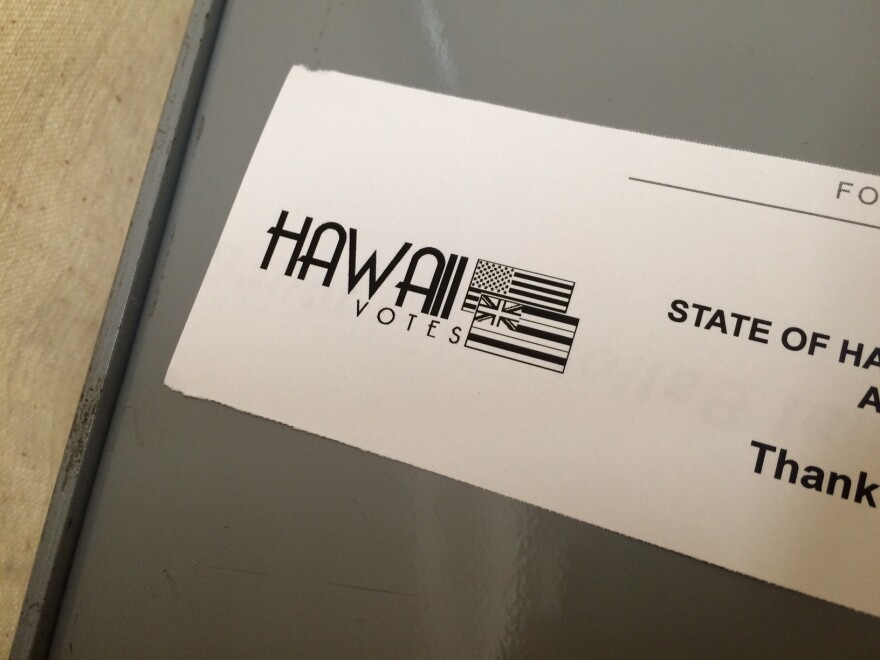While the Democratic Party retained dominance in state politics, the results show that opportunities still exist for conservative candidates.
When it comes to the results of state and local races in Hawaii’s 2020 election, Colin Moore with the Public Policy Center at University of Hawaii-Manoa says there is one word to describe the results: stability.
“Pretty much all of the incumbents got reelected despite the fact that we had this tremendous increase in voter turnout,” Moore said in an interview the day after the election.
Many polls and pundits predicted that an upwelling of dissatisfaction with Trump Administration policies would propel progressive Democrats into power nationally, the so-called “blue wave.”
Not only did the blue wave not materialize, Democrats in Congress appear to have lost seats in the U.S. House of Representatives, while control of the Senate remains uncertain pending the result of two runoff contests in Georgia.
In Hawaii, Democrats did not lose ground, but they failed to unseat any Republican candidates who ran for reelection. The result is that the status quo of recent years has been almost uniformly maintained.
That was despite a significant increase in voter turnout locally. Because of the early voting options associated with Hawaii’s switch to an all-mail election, more people in Hawaii cast ballots before the election day in 2020 than the total submitted in 2016.
However, that increase failed to shift the balance of power in the state. Democrats still control all statewide offices and have super majorities in both chambers of the state Legislature. Moore says that indicates widespread dissatisfaction with the Republican Party.
“The R next to your name really is the kiss of death for statewide office,” he noted.
But the results also paint a more complicated picture. Moore pointed out that Hawaii’s handful of Republican incumbents all held on to their seats. His conclusion is that Republicans can succeed in Hawaii if they are able to overcome the initial barrier of first-time election.
The 2020 results indicate that there are opportunities at the local level for Republicans to circumvent that initial election barrier.
In Hawaii, races for county offices like mayor or council member are nonpartisan. Moore says the lack of party label has created opportunities for Republicans and conservative Democrats to win elections.
“In these nonpartisan races, there are plenty of more conservative Democrats who are willing to vote for more conservative candidates, as long as they’re not official members of the Republican Party.”
That was evident this year on Oahu, where the more conservative candidate for Honolulu mayor, Rick Blangiardi, won the race by nearly 20 points.
Although Blangiardi is not a registered Republican, the party sees his success as an example of how more conservative candidates can be successful in the islands.
Hawaii Republican Party Chair Shirlene Ostrov told HPR that the party is disappointed it did not pick up any new seats, but now sees a clear path forward. Ostrov said it begins with recruiting new candidates to run for office, a process that has already begun.
“We’ve got two years to figure out the messaging that works for Hawaii,” Ostrov said in a phone interview. “No longer are we the party of the rich and the party that doesn’t appear to be conducive with Hawaii values.”
That may prove to be a fruitful strategy. Moore says that despite being solid blue, Hawaii’s voters are not as progressive as they might appear on paper.
“The Hawaii Democratic Party, at least its representatives in the Legislature, are hardly left-wing progressives,” he noted. “They’re very much centrists to, in some cases, conservative Democrats. So Hawaii is a Democratic state, it’s not necessarily a progressive state.”
For it’s part, the local Democratic Party celebrated the success of several new candidates, including progressive Adrian Tam, who successfully ran to represent Waikiki in the state House and will be the Legislature’s only openly LGBTQ member, and Patrick Bronco, a former U.S. diplomat who captured the seat of Republican Rep. Cynthia Thielen, who retired after 30 years in office and was not seeking reelection.
“These new candidates coming in are going to bring some new energy and ideas and that’s a positive thing,”Democratic Party of Hawaii Chair Tyler Dos Santos-Tam told HPR. “I think they’re going to hit the ground running on behalf of their constituents.”
Signs are emerging that a shift toward more progressive electoral preferences may be underway.
While not much ultimately changed this year, high-ranking Democrats like House Speaker Scott Saiki faced credible primary challenges from progressive candidates to their left. Moore says the progressive shift is most evident in Neighbor Island races.
“We see a very clear progressive-centrist divide on Maui, for instance, that we haven’t seen so much in the state Legislature or on Oahu, but I think we’re moving in that general direction,” he noted.
If those candidates are able to win state-level office, Moore says a progressive caucus may start to emerge at the state Capitol.
Another trend appears to have reversed direction much more abruptly. Hawaii has been ranked among the worst-in-the-nation for voter turnout in recent years. With the advent of mail-in voting, that finally appears to have altered course in 2020. Moore predicts that bump will be permanent.
“People who have that experience of voting for the first time, they’re likely to remain voters,” he explained. “We may not be stuck in 50th place anymore.”
Whatever their politics, newly elected officeholders face major challenges. Hawaii's unemployment rate leads the nation and coronavirus has crippled tourism, the state's largest industry.



